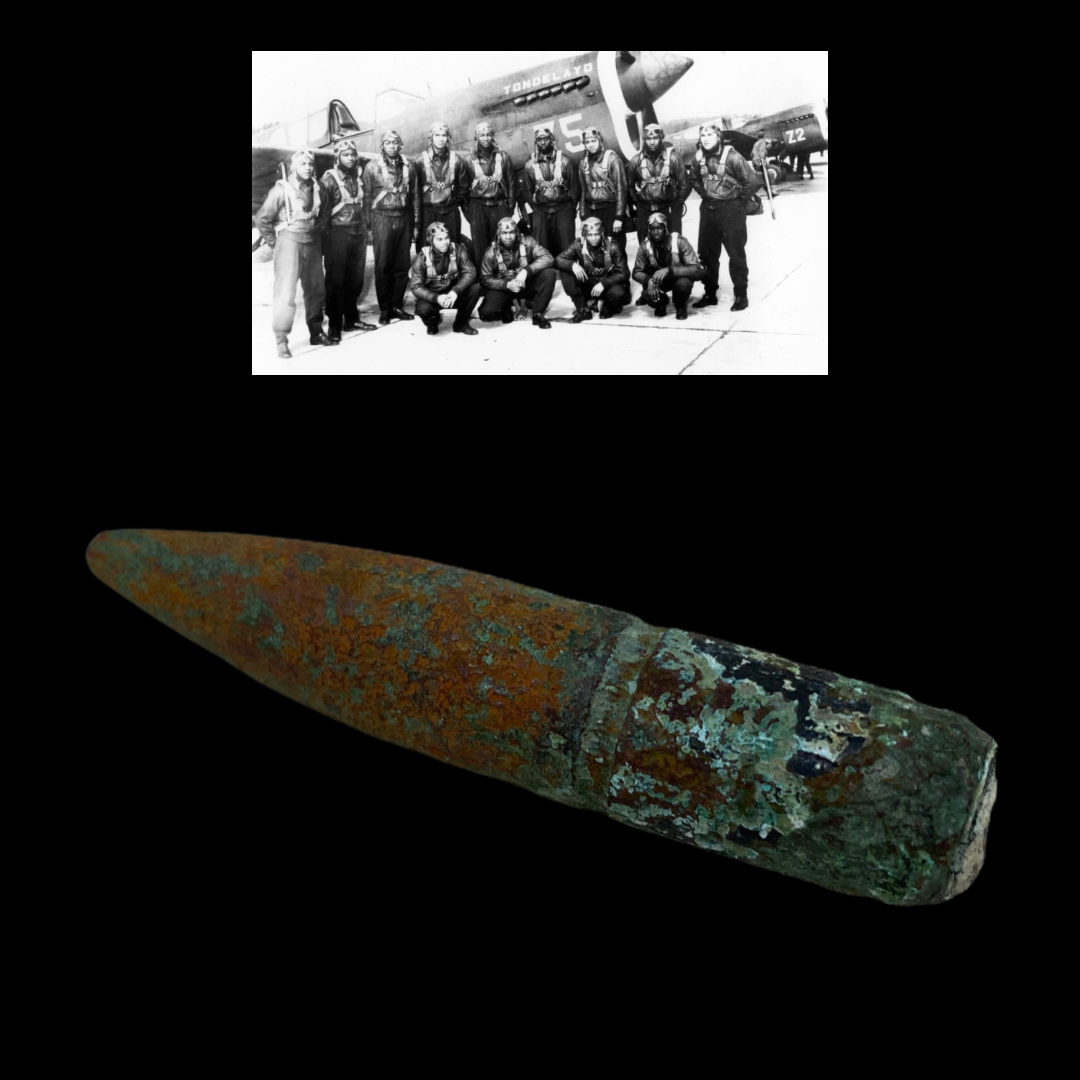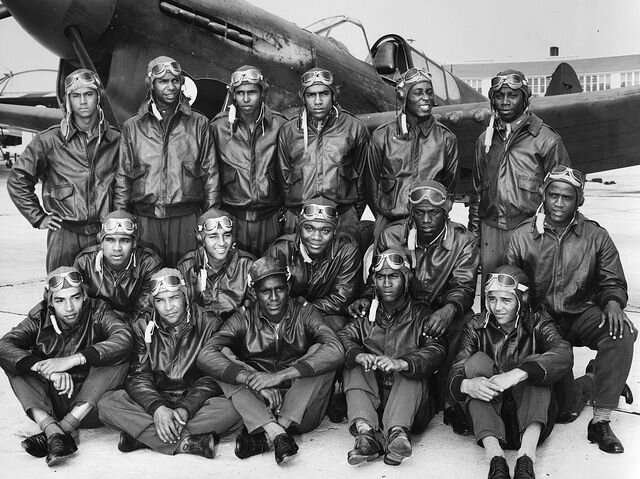*Rare WWII Tuskegee Airmen .50 Strafing Target Practice Bullet - Otter Island Marine Excavation













*Rare WWII Tuskegee Airmen .50 Strafing Target Practice Bullet - Otter Island Marine Excavation
Certificate of Authenticity (C.O.A.) Included.
3 of 4 recovered.
This rare WWII Tuskegee Airmen artifact is a fired .50 bullet shot in strafing practice off Otter Island, South Carolina. Otter Island has a rich history and well known for being used as target practice during World War II by the Tuskegee Airmen being trained at the nearby Walterboro Airfield. The Tuskegee Airmen were trained to be aircraft mechanics, armament specialists, radio repairmen and control tower operators, among other positions in support of the Army Air Corps. Airmen who became pilots were trained at the Tuskegee Army Air Field in Tuskegee, Ala., but received combat training in other locations, including the Walterboro Army Airfield. In total, 994 Tuskegee pilots were commissioned.
This .50 fired bullet was discovered during an excavation where 4 others were recovered from historically recorded strafing practice locations of the Tuskegee Airmen. The black Tuskegee pilots that fired these bullets during their final training went on to fly supporting missions for American bombers over Germany.
The Tuskegee Airmen were the first Black military aviators in the U.S. Army Air Corps (AAC), a precursor of the U.S. Air Force. Trained at the Tuskegee Army Air Field in Alabama, they flew more than 15,000 individual sorties in Europe and North Africa during World War II. Their impressive performance earned them more than 150 Distinguished Flying Crosses, and helped encourage the eventual integration of the U.S. armed forces.
Tuskegee Experiment:
In September 1940, Roosevelt’s White House responded to such lobbying campaigns by announcing that the AAC would soon begin training Black pilots.
For the training site, the War Department chose the Tuskegee Army Air Field in Tuskegee, Alabama, then under construction. Home to the prestigious Tuskegee Institute, founded by Booker T. Washington, it was located in the heart of the Jim Crow South.
The program’s trainees, nearly all of them college graduates or undergraduates, came from all over the country. In addition to some 1,000 pilots, the Tuskegee program trained nearly 14,000 navigators, bombardiers, instructors, aircraft and engine mechanics, control tower operators and other maintenance and support staff.
In April 1942, the Tuskegee-trained 99th Pursuit Squadron deployed to North Africa, which the Allies had occupied. In North Africa and then Sicily, they flew missions in second-hand P-40 planes, which were slower and more difficult to maneuver than their German counterparts. After the commander of the 99th’s assigned fighter group complained about the squadron’s performance, Davis had to defend his men before a War Department committee.
Rather than being shipped home, the 99th was moved to Italy, where they served alongside the white pilots of the 79th Fighter Group. In early 1944, pilots from the 99th shot down 12 German fighters in two days, going some distance toward proving themselves in combat.
In February 1944, the 100th, 301st and 302nd fighter squadrons arrived in Italy; together with the 99th, these squadrons of Black pilots and other personnel made up the new 332nd Fighter Group.
After this transfer, the pilots of the 332nd began flying P-51 Mustangs to escort the heavy bombers of the 15th Air Force during raids deep into enemy territory. The tails of their planes were painted red for identification purposes, earning them the enduring nickname “Red Tails.”
Though these were the best-known of the Tuskegee Airmen, Black aviators also served on bomber crews in the 477th Bombardment Group, formed in 1944.
A popular myth arose during the war—and persisted afterwards—that in more than 200 escort missions, the Tuskegee Airmen had never lost a bomber. The truth wasn’t uncovered until years later, when a detailed analysis found that enemy aircraft shot down at least 25 bombers they escorted.
Nonetheless, that was a much better success rate than other escort groups of the 15th Air Force, which lost an average of 46 bombers.